Previous articles have discussed pre- and post-workout meals, fight day nutrition, and how to train without eating anything at all, so called “fasted workouts.” That means that there’s one major thing missing in the sports nutrition department: your regular everyday meals as a kickboxer. This article will cover easy principles to approach healthy sports nutrition.
The basic principles for healthy fighter nutrition are
- Approach your diet on a weekly basis
- Focus your diet on whole / unprocessed foods
- Judge individual food products, not food categories
- Listen to your body; your nutritional needs vary on a daily basis
But what about the daily calorie guidelines – do these count? And what are whole foods – isn’t every product processed to a certain degree? Also, how I exactly do I judge a food product? The next parts cover all these questions and more so you can feed your body with the best fuel possible!
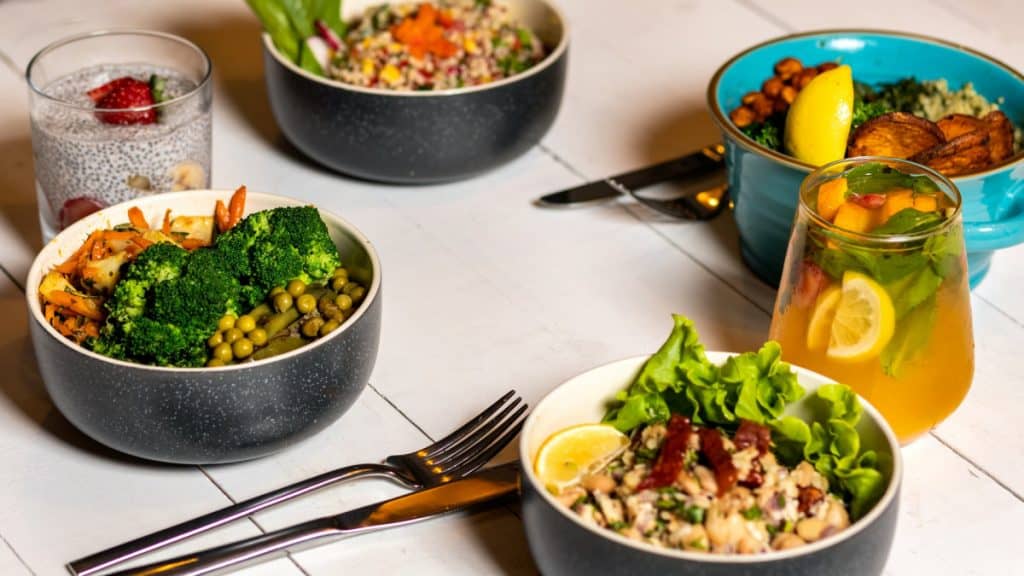
Why to approach your diet on a weekly basis
The daily calorie guidelines – 2000 for women and 2500 for men – don’t hold up if you practice intense activities like martial arts. 1 hour of kickboxing already burns 600-1000 calories, depending on the intensity and your weight, and you need to replenish these calories to be able to perform optimally.
Furthermore, if you do intense workouts like kickboxing for 2+ times a week, your body has increased nutritional needs across the board. The extra carbohydrates that you need are pre-workout carbs to fuel your training, and post-workout carbs to stop the breakdown of muscle.
In addition, you need lots of protein throughout the week, for these are the building blocks of your muscles that help them recover and grow. Optimal daily protein intake is actually far higher than most recommendations: 100-125 grams a day on a 2000-2500 calorie diet, meaning that you need 130-175 grams of protein if you replenish the 600-1000 calories that you lost during your kickboxing training. Thus, besides your post-workout serving of protein that kickstarts your recovery, you need proper servings of protein rich foods in all your meals.
Your pre-workout meal is the only meal where protein isn’t as important. Before your workout it’s primarily about fuel, which you get from carbs. Still, eat some protein before your workout to benefit from the muscle growth induced by your workout.
Besides calories, carbs, and protein your body also needs extra healthy dietary fats if you train intensely for 2+ times a week. Dietary fats (including saturated fats for your testosterone production) nourish your brain, keep your body supple, and aid the uptake of various micronutrients.
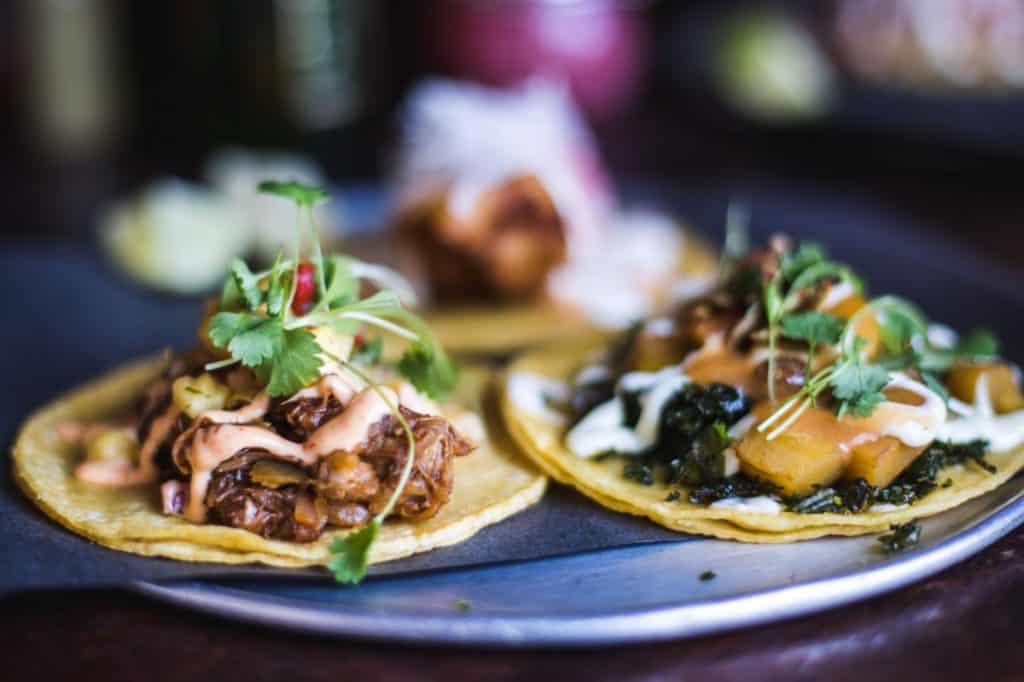
What are micronutrients?
Micronutrients consist of vitamins like vitamin A, B, C, and D, minerals like calcium, magnesium and potassium, and trace elements like zinc, iron, and iodine. In contrast to the macronutrients – carbohydrates, protein, and fat of which your body needs a lot – your body only needs small amounts of each micronutrient.
Still, micronutrients are essential for your body to function well and to keep you healthy, energetic, and happy. Micronutrients are only available in small amounts in foods, and you have to eat a varied diet in order to get them all in optimal amounts – this is one of the primary reasons why varied eating is recommended.
Did you ever notice that a lot of salt in the store is reinforced with iodine – iodized salt? Iodine is essential for the functioning of the thyroid gland, which plays an important role in our growth, metabolism, and nervous system. Since Western diets of the early 20th century were suffering from an iodine deficiency, making bakers use iodized salt to bake the daily bread was an easy way to increase the population’s iodine levels. These days, most people in the West aren’t suffering from this deficiency anymore, but roughly 2 billion people around the world are still iodine deficient.
Throughout the day, varying your meals goes automatically; you hardly feel like eating the same all day. However, if you eat the same most of your days in the week, you’re likely to get too much of certain micronutrients, and too little of others. In other words, having chicken, rice, and broccoli for dinner every day is neither healthy, nor supporting your athletic capabilities in the long term.
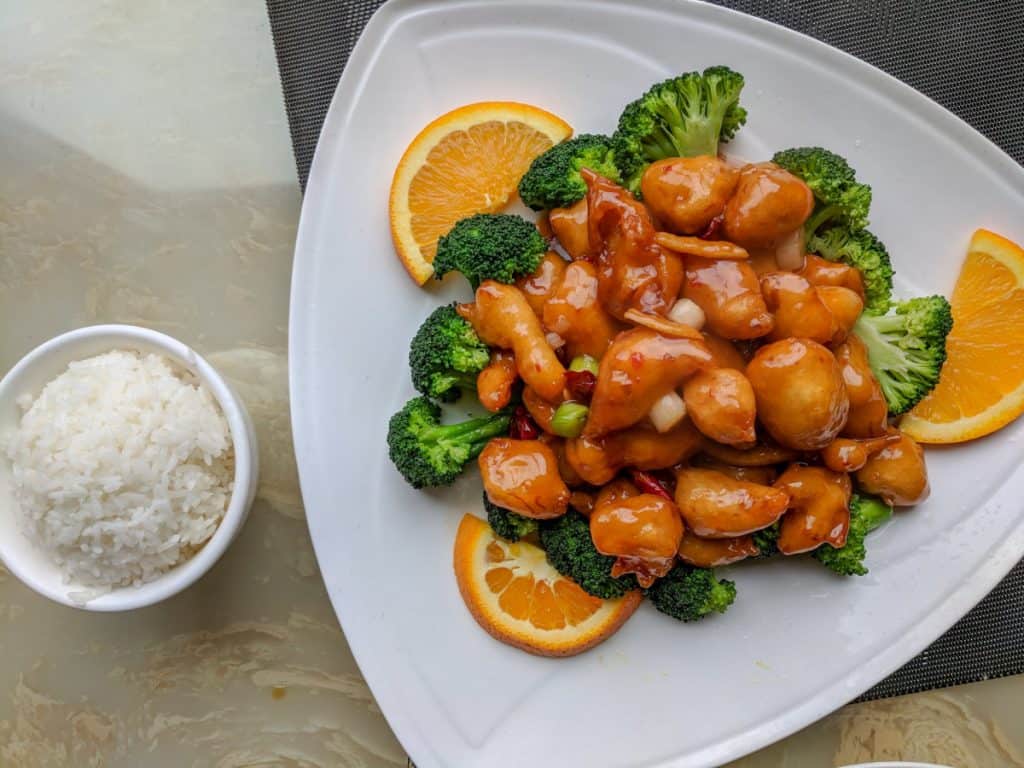
Micronutrients for athletes
Besides needing more carbs, protein, and fats than a sedentary person, you also need more micronutrients as a kickboxer. Particularly the ones that you lose through sweat – vitamin B and C, and minerals zinc, magnesium, calcium, sodium, and potassium – you need to replenish to stay fit and healthy.
A 2:1 calcium-magnesium ratio is very important for athletes, for calcium helps to flex your muscles and magnesium helps to relax them. In effect, a dominance of calcium over magnesium will make you tense, which causes you to waste energy, to be prone to muscle cramps, and which makes falling asleep harder. Conversely, a dominance of magnesium over calcium will give you a hard time flexing your muscles, which makes you lose strength and feel lethargic.
Some of these are easily available: sodium from salt, vitamin C from any fruit or vegetable, potassium from bananas, avocados, watermelons, (sweet) potatoes, or spinach, and magnesium from cacao (& 70%+ chocolate), nuts, seeds, seafood, wholegrains, and dark leafy greens. Calcium won’t be a problem if you eat dairy, but if your diet is limited to plant-based foods you need to eat lots of beans, legumes, almonds, and seeds like sesame, flax, and chia to get enough calcium. Similarly, vitamin B12 only occurs naturally in animal-based foods, so vegan sources are limited to fortified foods, microorganisms like chlorella, and supplementation (see this article for more information).
#Pro-tip: not all your minerals have to come from food. Coconut water is full of potassium and sodium, and contains some magnesium, phosphorus, and zinc too. Alternatively, mineral water is an easy way to add more minerals to your diet. The amounts vary from brand to brand, but you can get decent amounts of calcium, magnesium, and potassium from drinking mineral water.
So, while you can have the same optimized meals pre- and post-workout, it’s important to vary the rest of your meals throughout the week. Eat different fruits and vegetables and micronutrient rich carb sources like sweet potatoes, wholegrain rice, quinoa, and bulgur. While cooking, vary olive oil, with butter/ghee, tallow, avocado oil, or coconut oil (avoid unstable and inflammation-causing vegetable oils like canola and soybean oil), and use cold-pressed olive- or nut-oil for dressing. Eat a range of protein rich foods to optimize your recovery: (organ) meat, seafood, eggs, dairy, various nuts, seeds, mushrooms, beans, and legumes, and fat fish like salmon, tuna or mackerel.
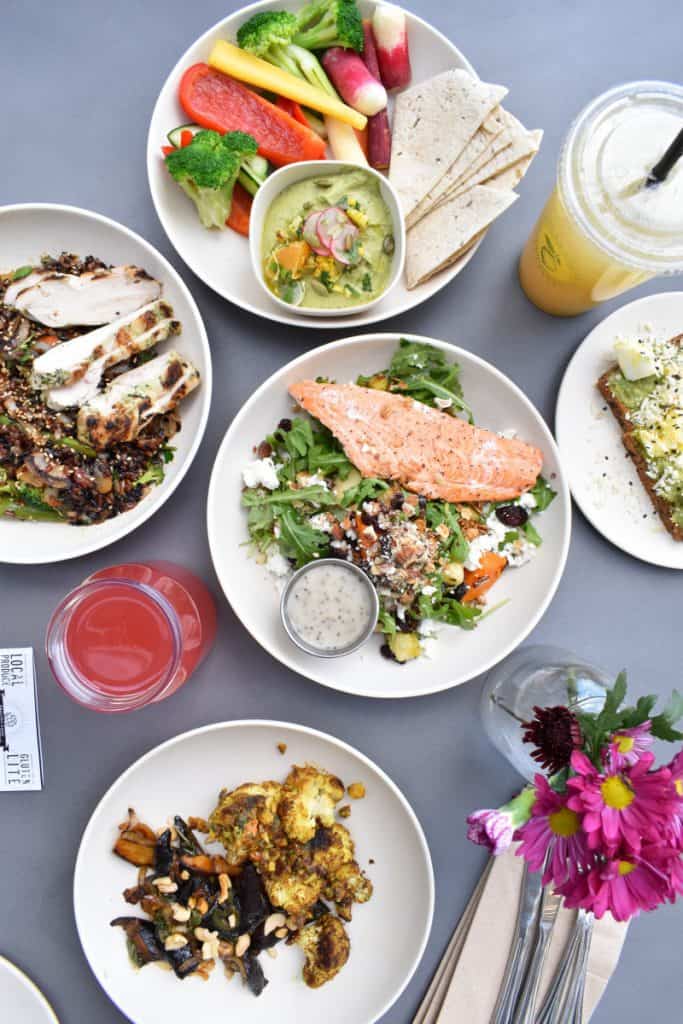
#Pro-tip: do you (sometimes) eat plant-based? Make sure to pair legumes always with a wholegrain product. Plant-based products generally don’t have all 9 essential amino acids (building blocks of protein that your body cannot produce itself), meaning that you have to eat various plant-based products together to get a complete intake of all 9 essential amino-acids to build a “complete protein.” Legumes and grains fill in each other’s missing essential amino acids, so together they provide a source of complete proteins. Interestingly, many traditional meals are already composed this way: rice and beans, bread with nut butter, pita with humus, pea soup with rye bread, and dal with naan bread.
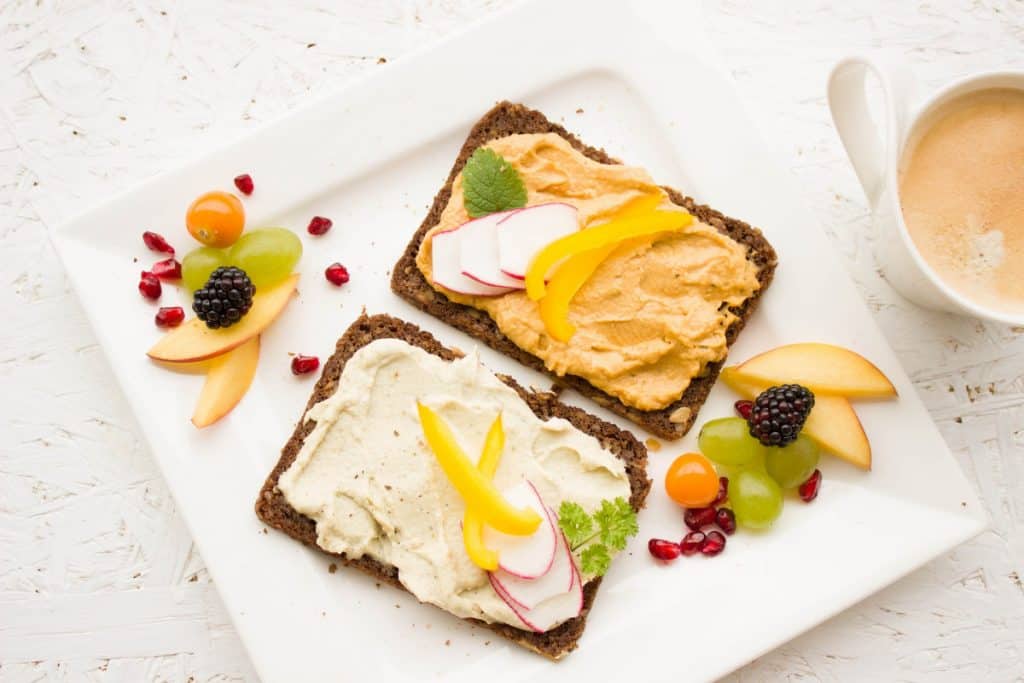
What are whole foods?
Whole foods are food products and ingredients that come largely in their original states:
- Fresh and frozen vegetables and fruits
- Mushrooms
- Dry beans and legumes
- Eggs, meat, fish, and sea food
- Nuts and seeds
Relatively unprocessed foods like whole grains are generally considered whole foods too. Whether dairy classifies as a whole food is debatable, but for our purposes here we can consider any dairy made from raw milk without any added sugars or additives as whole food too.
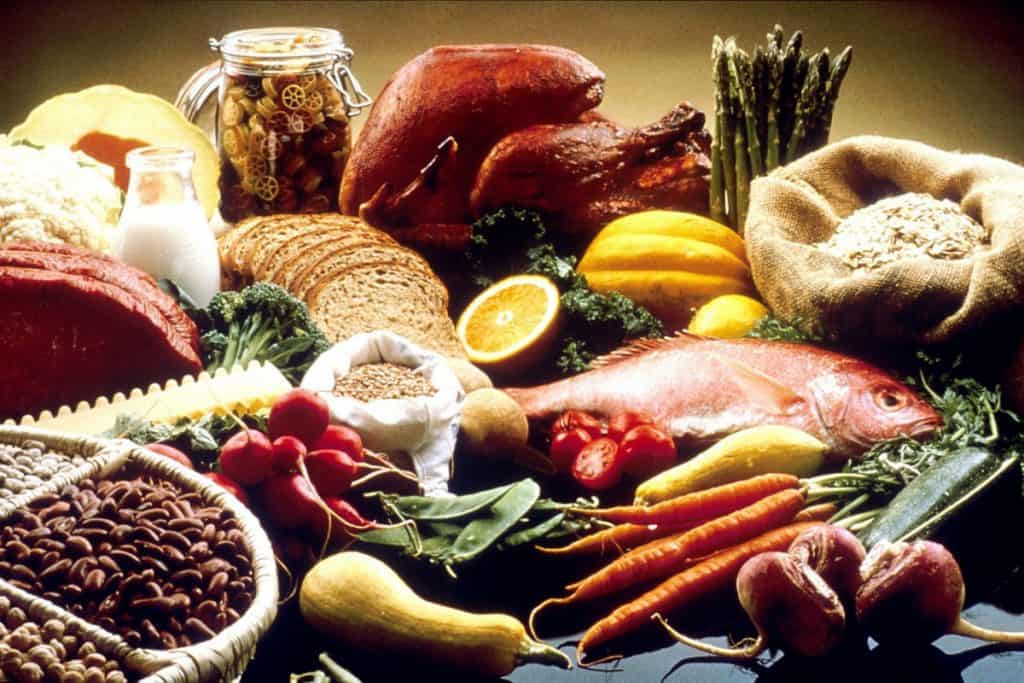
Why focus your diet on whole foods?
Besides being full of fiber and macro- and micronutrients, the unprocessed nature of whole foods makes it easy to make healthy food choices. With most whole foods you can directly see what you’re eating, and if they have added ingredients at all, they will be few and easily recognizable.
Conversely, processed foods can have long lists of scientifically named ingredients that hardly any of us can even begin to pronounce. Now some of these may be healthy and nutritious but many of them will be the worst things that you can put into your body: trans fats, refined sugars, and food additives/E-numbers (artificial sweeteners, fillers and binders, coloring agents, taste enhancers, and preservatives).
Also, you automatically avoid all “white” products by eating whole foods. By making grains and rice “white”, they lose their minerals, healthy fats, and fibers, causing your energy levels to peak and crash after eating them.
Thus, if you focus your diet on whole foods, you automatically skip all foods and ingredients that have no nutritional value and/or even harm your body. What’s left is what your body truly needs – healthy food full of nutrients.
Note that there are various harmless E-numbers as well, like E100 (curcuma), E260 (vinegar acid), E300 (vitamin C), and E410 (Locust bean gum). The app E Numbers Calc: Food Additives is very convenient to check the nature of a food additive and whether its harmful for your body.
Why to judge individual food products, not food categories?
Judging whole foods is simple, for you see or know all the ingredients that you eat. However, you probably eat (some) processed foods too. Now some draw a straight line here and avoid all processed foods, but that excludes a lot of potentially healthy and delicious foods from your diet too.
For example, a sourdough bread made from rye, nuts, and/or seeds is super nutritious compared to a regular brown bread or a croissant. Similarly, pasta from spelt flour is more nutritious and easier to digest than white pasta, and lentil or chickpea flour pasta is even richer in protein and fiber. And what about hamburgers? They vary from McDonalds “quality” to burgers made from grass-fed animals and even wild game.
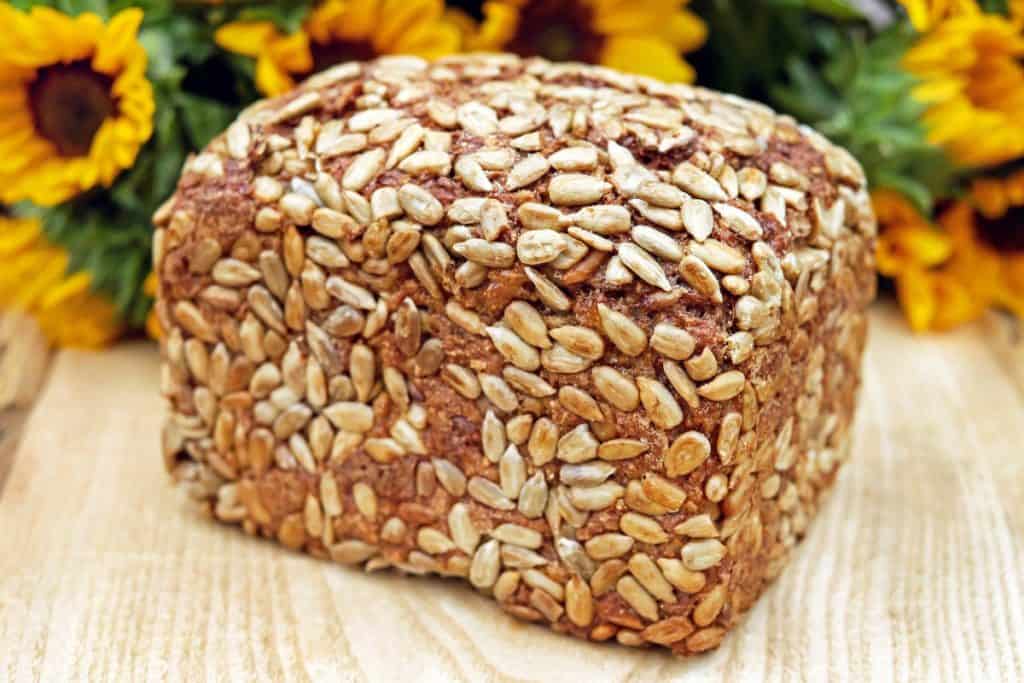
#Pro-tip: eat your grain products – breads, pastas, etc. – from sourdough fermented ancient grains like spelt, buckwheat, or timilia (an ancient wheat variety from Sicily). Many of the digestion issues and the un-satiating feeling that these products can induce come from using baker’s yeast (instead of sourdough) and the complex gluten-profile of modern wheat, which is a consequence of yearlong GMO’ing for speed and quantity instead of quality and digestibility.
Variation in animal products
Animal products vary widely in quality: dairy and meat from cows, goats, or sheep that walk outside and feed on grass and herbs are completely different from animals packed together (causing them to “need” more antibiotics) on feed lots. Thus, simply denouncing meat or dairy is too short-sighted.
Similarly, eggs and meat of chickens jammed together in a cage and raised on corn, soy, and hormones are completely different from chickens grubbing outside, eating seeds, fruits, insects, snails, and mice or frogs (yes, these little mini dinosaurs eat other animals when they get the chance).
If animals eat grass and herbs like they would in the “wild,” their products are far more nutritious and higher in healthy omega 3 fatty acids.
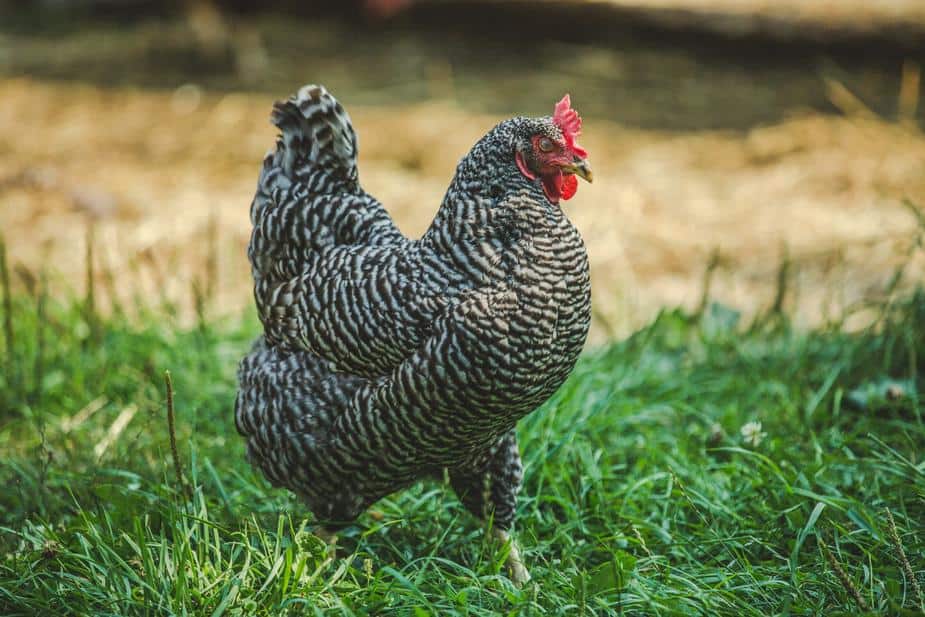
And the same goes for fish, of course. Wild salmon, for example, eat a lot of small fishes with high EPA- and DHA-levels (the healthy omega 3 fats that you find in fish oil supplements). Conversely, salmon farmed in cages are generally fed on the cheapest food pallets of the moment. Moreover, these fish are farmed in the most polluted areas of the water (close to land) because this is easier for the fish farmers. To prevent these fish from getting sick they are fed extra antibiotics and the water is “cleaned” with pesticides.
If you constantly get antibiotics via your meat and fish consumption, you build up a tolerance. Then, when you actually need antibiotics when you’re sick or in an accident, they’ll be less effective because of your tolerance.
Finally, it’s important to get your mushrooms from unpolluted regions (mushroom DNA and RNA is closer to us than to plants). Like us, the “mycelium” of mushrooms (the root-like part of a mushroom) digests organic matter. Where we digest inside our bodies, mycelium digests the organic material around itself. If these surroundings are polluted with pesticides, metals or radioactive waste (like mushrooms from the Fukushima region), this pollution also gets into the mushroom.
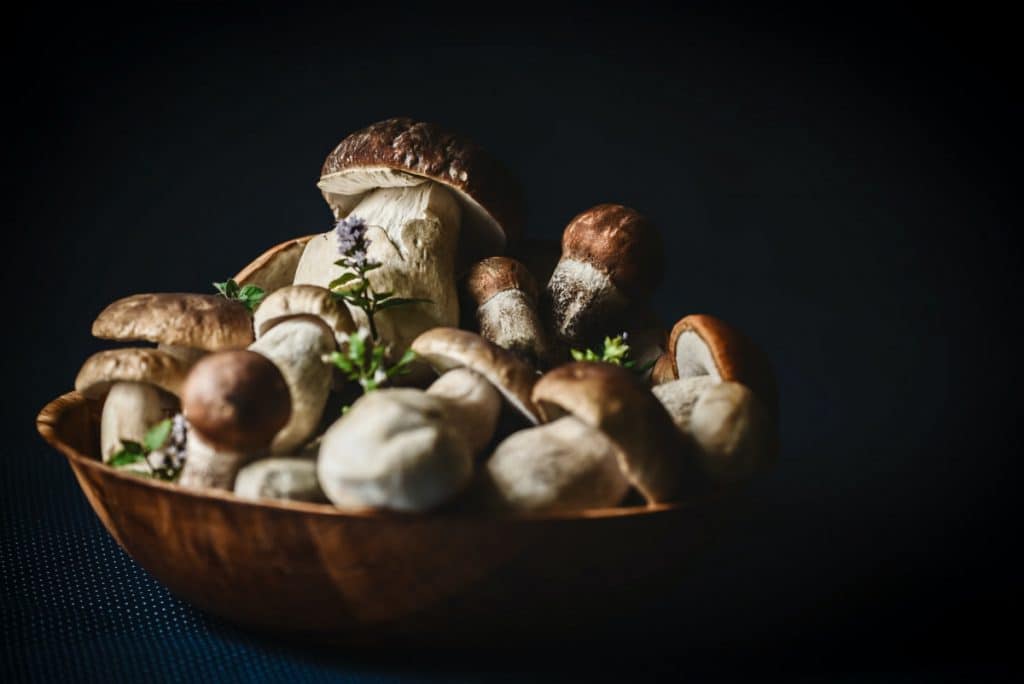
So, it’s not like “you are what you eat”; but rather “you are what your food ate”: grass, herbs, seeds, insects and other animals OR food pallets, hormones, and pesticides.
In sum, whether an animal or plant-based product is healthy depends largely on quality of the growing and/or living conditions of the animals and plants, including all the nutrition, hormones, and pesticides/antibiotics that were involved.
How do you determine food quality?
An easy way is to look for organic or Demeter labeled products. However, many of these products are (too) expensive – in part because of a focus on quality instead of quantity – but also because producers have to pay for using such a label.
While these labels are usually the best option available for those who can afford it, they also have their limits. “Organic chicken” is often still limited to a roofless caged area and can still contain some antibiotics. Moreover, bio fish is still farmed because in the wild such a label can of course never be guaranteed.
For animal products, the product itself is therefore a better indication. The wilder the animal, the more it moves throughout its life, resulting in more muscle- and less fat mass. This translates in roughly 20% more protein content and gives the meat or fish a different color: wilder meat is much darker and wild fish like salmon is orange-reddish and will turn “salmon pink” when you heat it; not because of coloring agents.
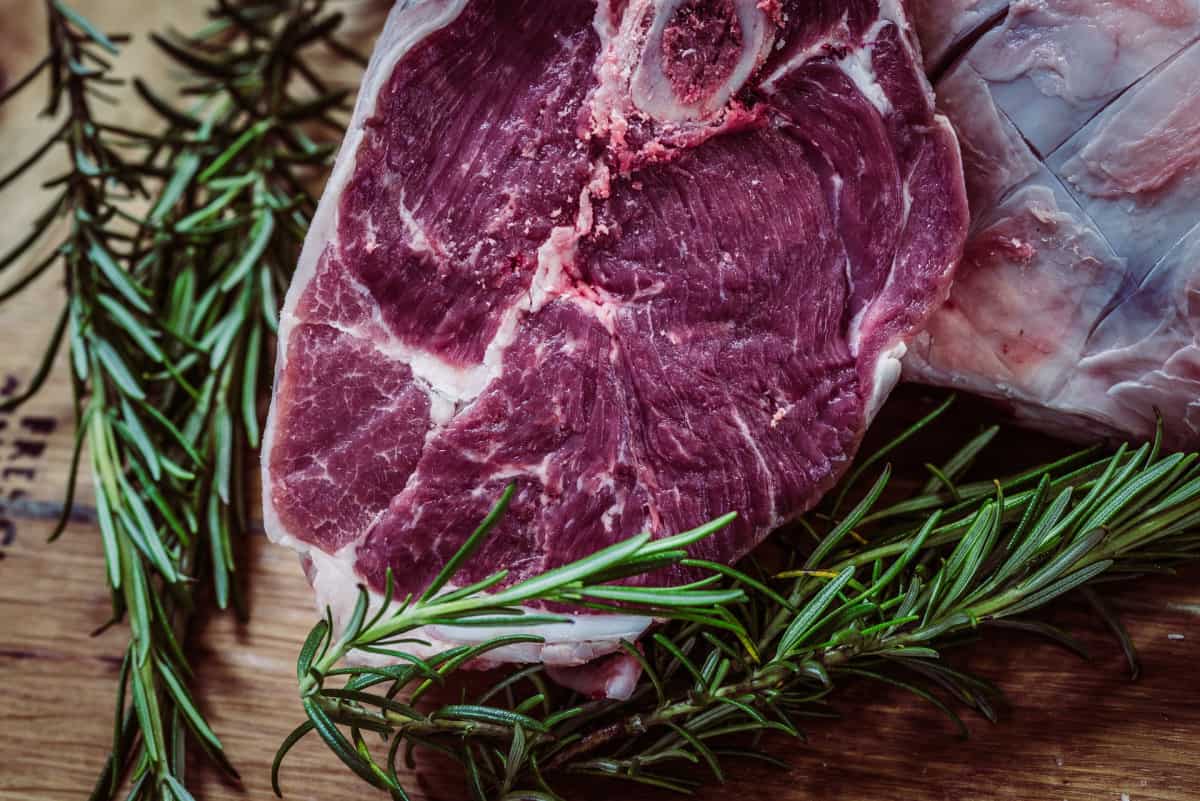
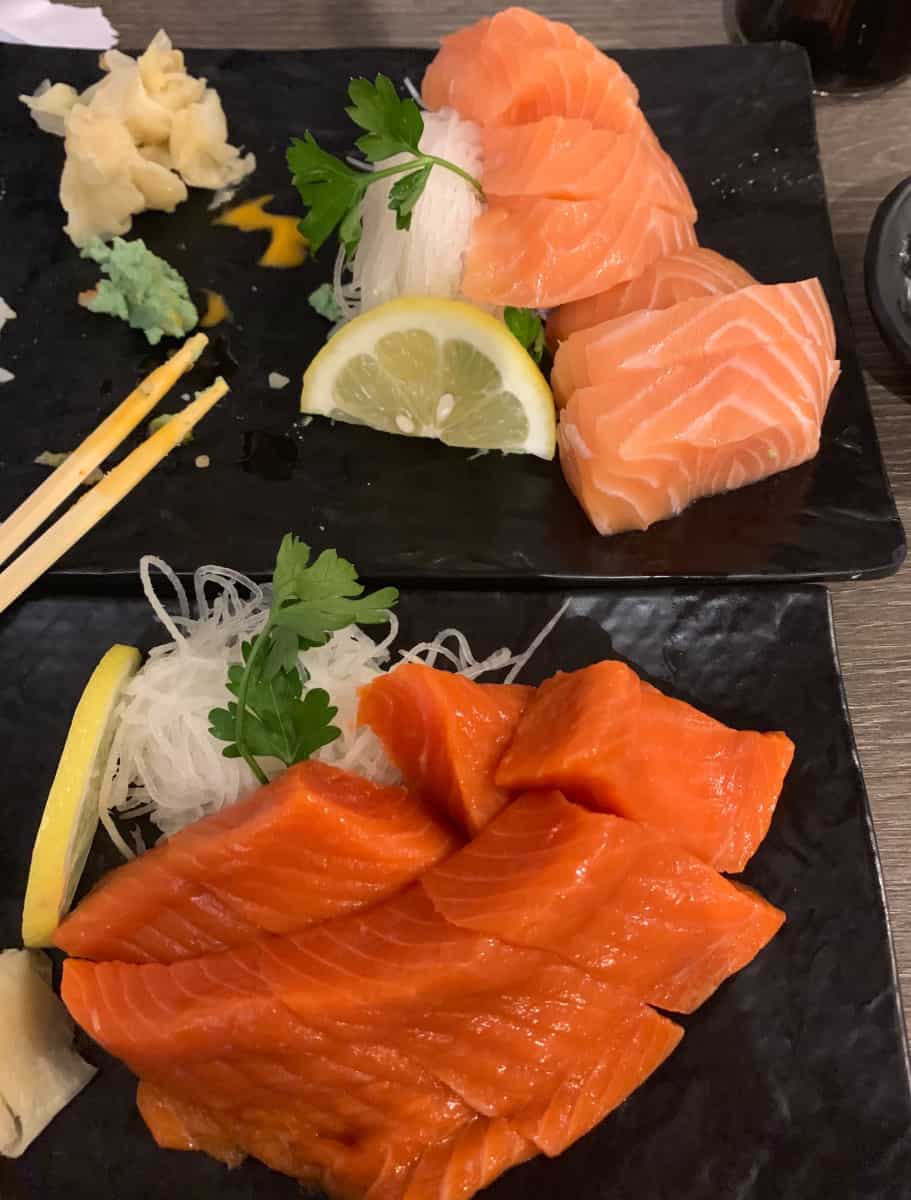
When it comes to eggs, you can check the yokes for their quality: yokes are firm and more orange than yellow colored when poultry eats a varied diet and has space to move around.
The meat of our own chickens that I would eat at my parents’ place had a dark color like duck meat. These chickens practically lived a “wild” life: they roamed freely, slept in trees, didn’t get any antibiotics, ate from the garden and the fields around it, and even flew a little from time to time.
With plant-based products it can be harder to determine quality. A tomato, for example, can look weirdly shaped but still be of good quality. Still, as a rule of thumb, your fruits and vegetables should look as little “polished” as possible. So, don’t buy that paprika or apple that reflects your face but choose the ones with the deep or mat colors.
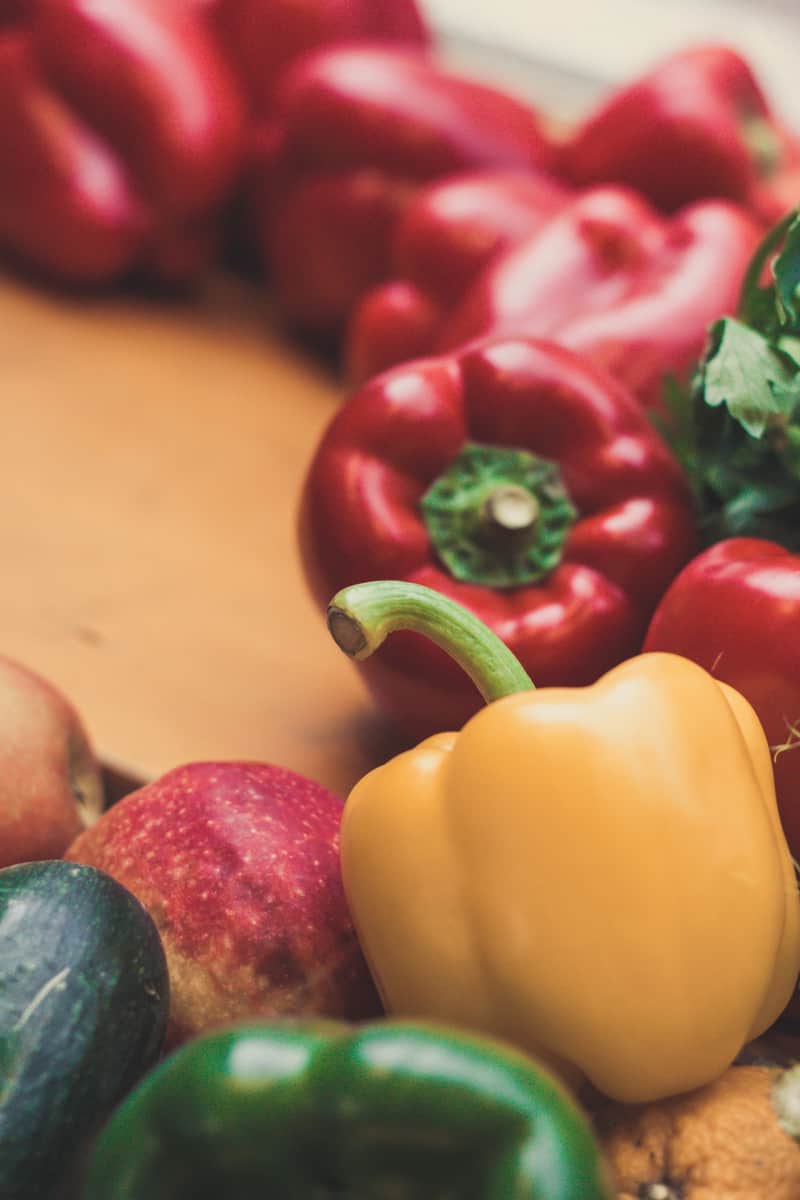
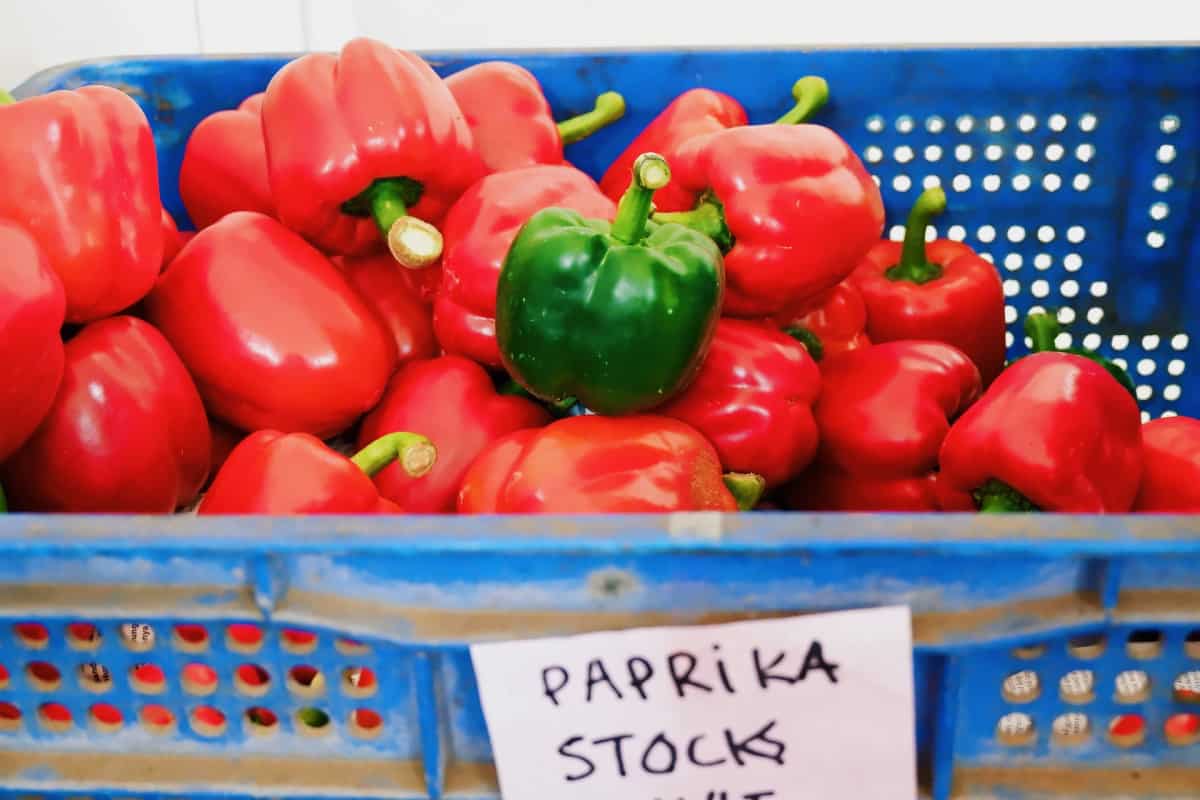
#Pro-tip: soak your fruits and vegetables 5-10 minutes in vinegar water (1/4 vinegar ¾ water). This kills the harmful bacteria, fungi, and remaining pesticides that can stick to the outside. Don’t forget to rinse off the vinegar water and dry the fruits and vegetables if you want to store them afterwards.
Since the polished look of produce is not the clearest indication, it’s important that you learn where your food comes from. This isn’t always easy because we hardly ever get our food straight from the source. Moreover, it can be a lot of research to do. Still, as a middle way I encourage you to take this challenge on step by step where you start by researching 1 product that you regularly buy each week:
- Where does the product come from?
- Plant-based: how is it cultivated
- Animal product: how was the animal held and fed?
- Were there hormones and/or pesticides involved?
- What is the nutritional value (for unpackaged products you can Google the average nutritional values)?
- Consider if there’s anything else that you deem important: for example, what an organic label at your favorite supermarket says about the product (they usually explain this on their website).
If you get to know this type of information about your food, you’ll be able to make better choices of what to feed yourself with. In addition, based on the nutritional values you can determine whether you can strategically eat a product before or directly after your training.
#Pro-tip: see if there are local (ethnic) markets or farms around you. These places often don’t bother with official certifications, allowing them to offer affordable prices for eggs, meat, or dairy from cage free animals and for organically grown fruits, vegetables or mushrooms.
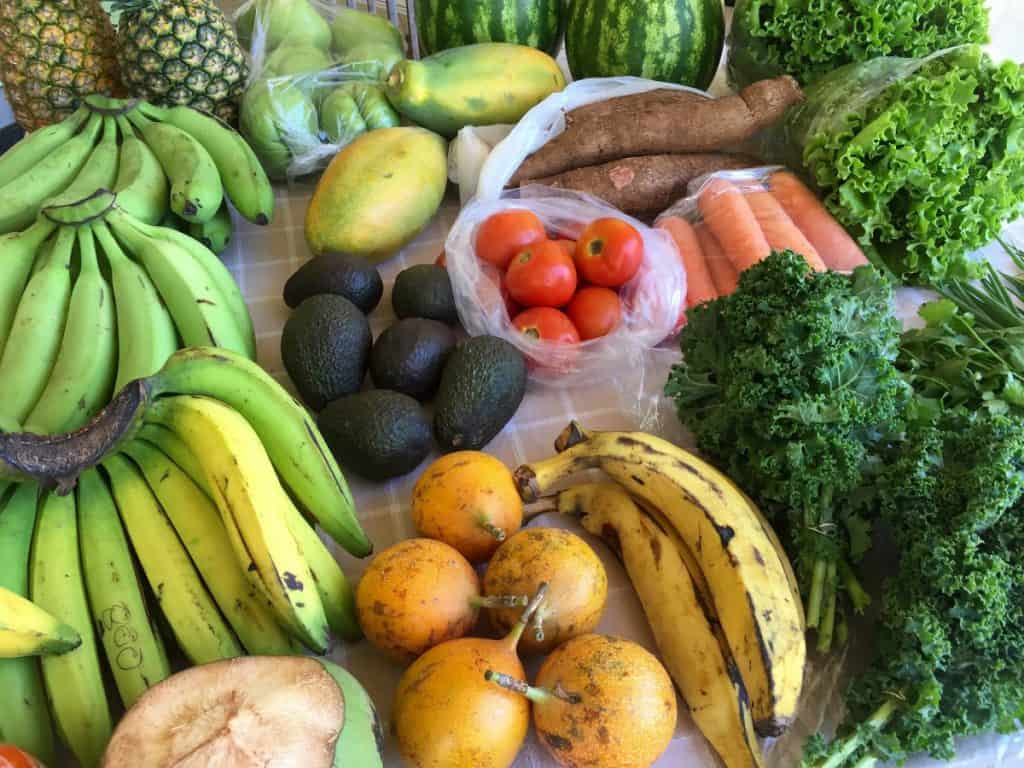
Why do your nutritional needs vary per day?
On training days, you spend more energy and thus require more/other nutrition. Conveniently, your hunger automatically increases if your train more often or more intensely. If you focus your diet on the foods discussed above, you’ll get a good feeling for when you’ve had enough to recover well.
However, training isn’t the only factor for your nutritional needs. An evening of drinking alcohol, a Christmas-sized dinner, or an evening full of bites and snacks change your nutritional needs for the day after. Alcohol slows your metabolism and withholds you from retaining liquids and thus your minerals. Accordingly, your body doesn’t necessarily need more food but you do need to replenish your liquids and minerals. And after an evening full of eating you’ll do good by fasting in the morning and limit your intake to water, tea and/or coffee until lunch time.
Finally, when you’re (getting) ill, it’s usually better to eat little to nothing for a while. While food gives you energy, digesting also costs energy. And when you’re (almost) ill, your body needs all available energy for recovery. In addition, after a period of not eating, your body gets into ketosis and starts “autophagy” – an overall repair and restoration of your cells. This process is extra important when you’re (almost) ill or when you’re dealing with chronic disease.
#Pro-tip: regularly measure your heart rate when you wake up (count your heart beats for 10 seconds and multiply by 6). Whenever you notice a 10% increase from your average, it means that your body is “fighting” against a disease or state of overtraining. Don’t work out on those days; rather take it extra easy so that your body can focus on recovery – this way you exchange 1 rest day for 5-10 days of illness.
By regularly “listening” to your body and learning what you feed yourself with you’ll get a good sense for how you stay healthy and energetic.
What are the best plant-based protein sources?
The plant-based protein sources that have all 9 essential amino acids (those your body cannot make itself) are: mushrooms, quinoa, hempseed, chia, buckwheat, amaranth, algae like chlorella, and Quorn, seitan, and soy products.
Do you like Parmesan cheese but don’t eat dairy? Then try substituting it with nutritional yeast – a deactivated yeast. These powdered flakes are full of complete proteins with all essential amino acids and are a good source of B vitamins!
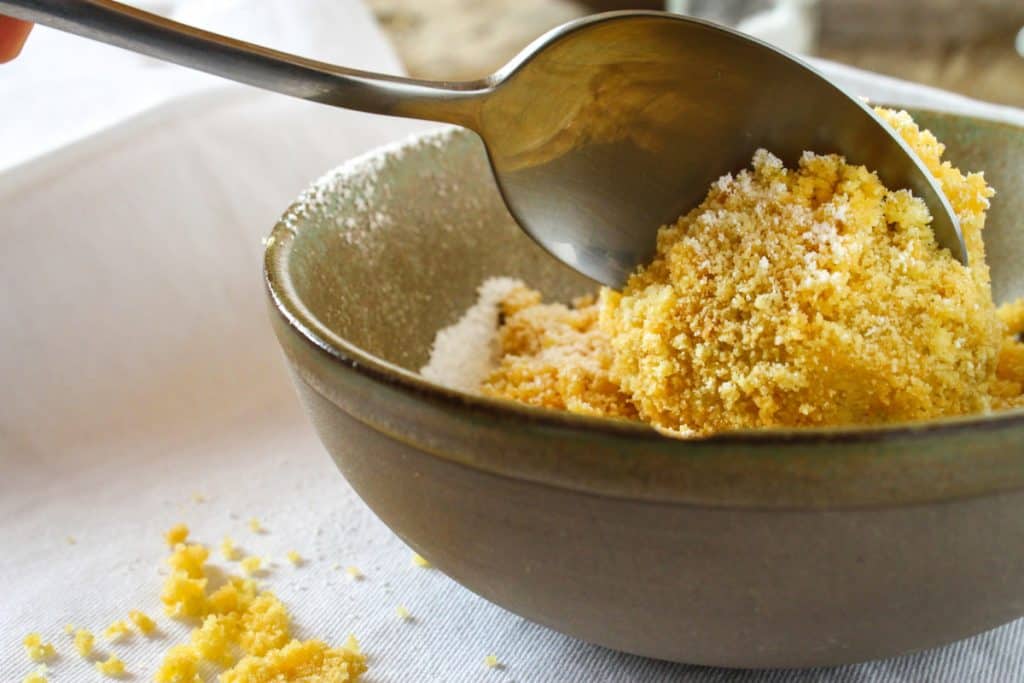
What is the first step to healthier sports nutrition?
Focus your diet on whole foods, eat your animal products as wild as possible, and your dairy from raw milk. Take a few minutes during grocery shopping to study one of your favorite products: read the label or ask the person selling it and do a Google search if you want to learn more.
For now, this may seem hard and a lot of work to begin with. However, once you’ve researched a couple of products, you’ll get an eye for what is important. And once you know more about your favorite products, you already make (more) conscious food choices for most of your diet. This enables you to strategically fuel yourself for a training or a fight, or to simply enjoy your foods knowing that healthy food supports both your sports performance and your overall vitality.
- Written by Merlijn Broersma
Recent Posts
The previous articles covered the foundation of fighting nutrition: the best pre- and post-workout meals, fight day nutrition, and what your everyday diet should include. This article will cover the...
In my previous article, I discussed the best pre- and post-workout meals for high intensity sports like Muay Thai Kickboxing. However, when it comes to fight nutrition specifically, pre-fight nerves...